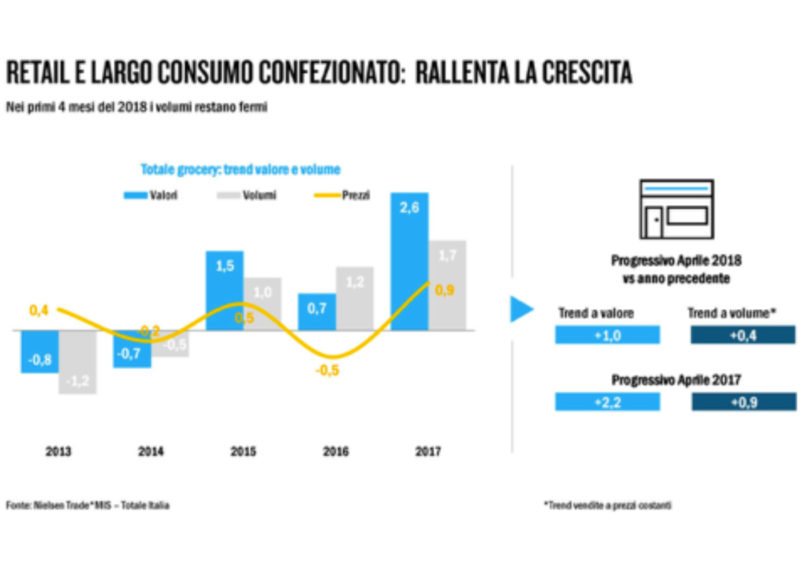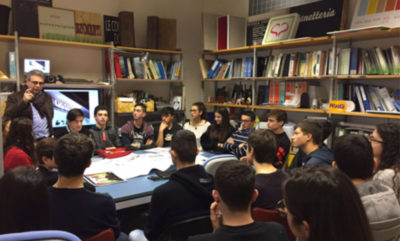Presented on the occasion of the 34th edition of Linkontro, an event dedicated to the consumer business
community in Santa Margherita di Pula, in the province of Cagliari, the results of the Nielsen survey on
Italian consumption in early 2018: changes the composition of the shopping cart but not the volume, given
that the turnover recorded only a 1% increase in turnover and an increase of 0.4 in volumes compared to
the same period in 2017, but with a differentiation in the variety and type of products purchased.
Green, healthy and gourmet products increase at the expense of traditional dishes with consumer purchase
choices dictated by the satisfaction of a wider range of needs compared to the past. Attention to wellbeing,
intolerance and social responsibility have led to an important growth of products that certify their
peculiarity directly on the packaging.
With regard to the relationships between brands, the sales growth of the Distributor Brand (MDD) and
small brands continues, while the largest continue to lose ground, thus generating an ever-increasing
fragmentation of consumer goods.
With regard to sales channels, in the period from January to May 2018, compared to the same period of
2017, discounters saw a growth in sales at value (at the same network) of + 1.5%, while supermarkets
recorded a decline in 0.9%, the hyper ones of 3.3%. E-commerce accounts for 1.5% of food sales, and grows
at double digits.
Commenting on the results of the survey, the CEO of Nielsen Italia, Giovanni Fantasia, said: We can not
avoid the fact that we are facing a more contained trend in the growth process, both in terms of volumes
and values, while remaining in positive territory. . By analyzing the reasons behind this trend, we are of the
opinion that Italy, like the rest of the big economies, has emerged from a period of ten-year crisis. On the
other hand, the path that awaits us is not without obstacles. Think, for example, of the large pockets of
poverty still present on the national territory and the accentuation of the polarization of social status. It is
therefore necessary that the world of retailing knows how to face the challenge of an increasingly varied
shopping cart, full of products that come from the perimeter of ordinary consumption (traditional first
courses and first and second courses) and that reveal more personalized consumption habits and less
expected that do not necessarily comply with the logic of expected volumes within a favorable economic
situation. Finally, we can not disregard a socio-economic context that is not without uncertainties. To be
able to leverage the growth process, it is therefore necessary to adhere to the needs of consumers, taking
into account the complexity of the factors involved when deciding to purchase a product».





